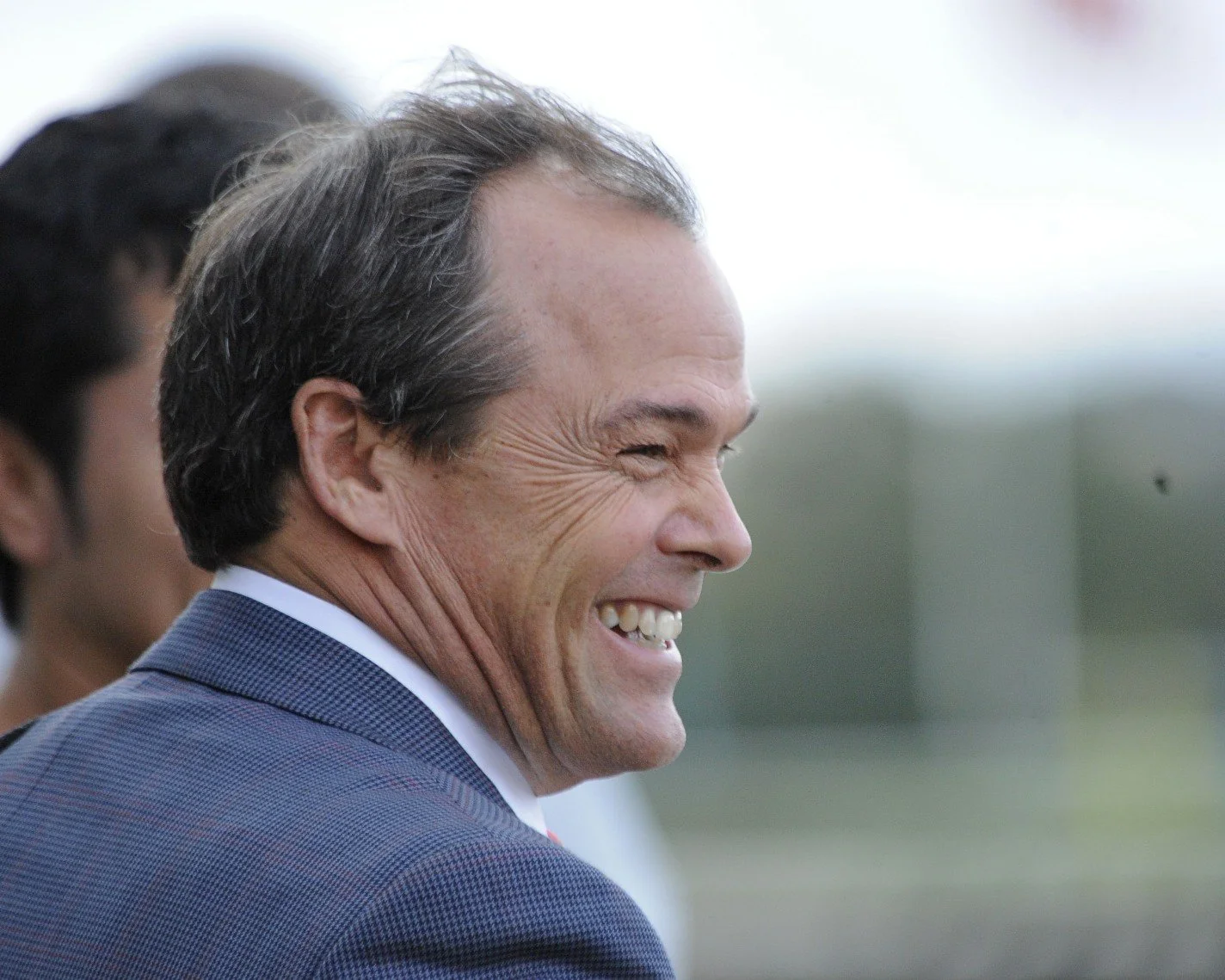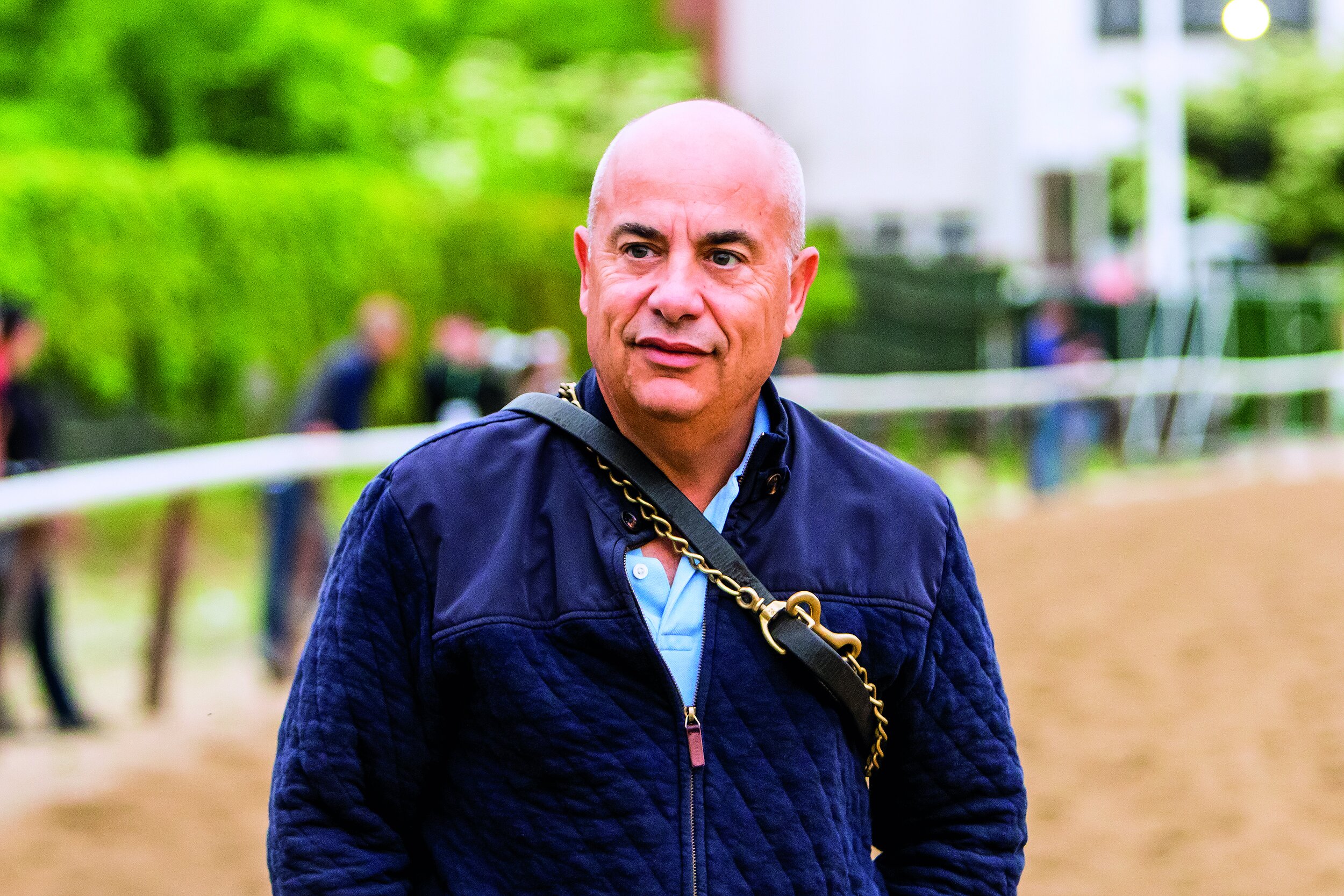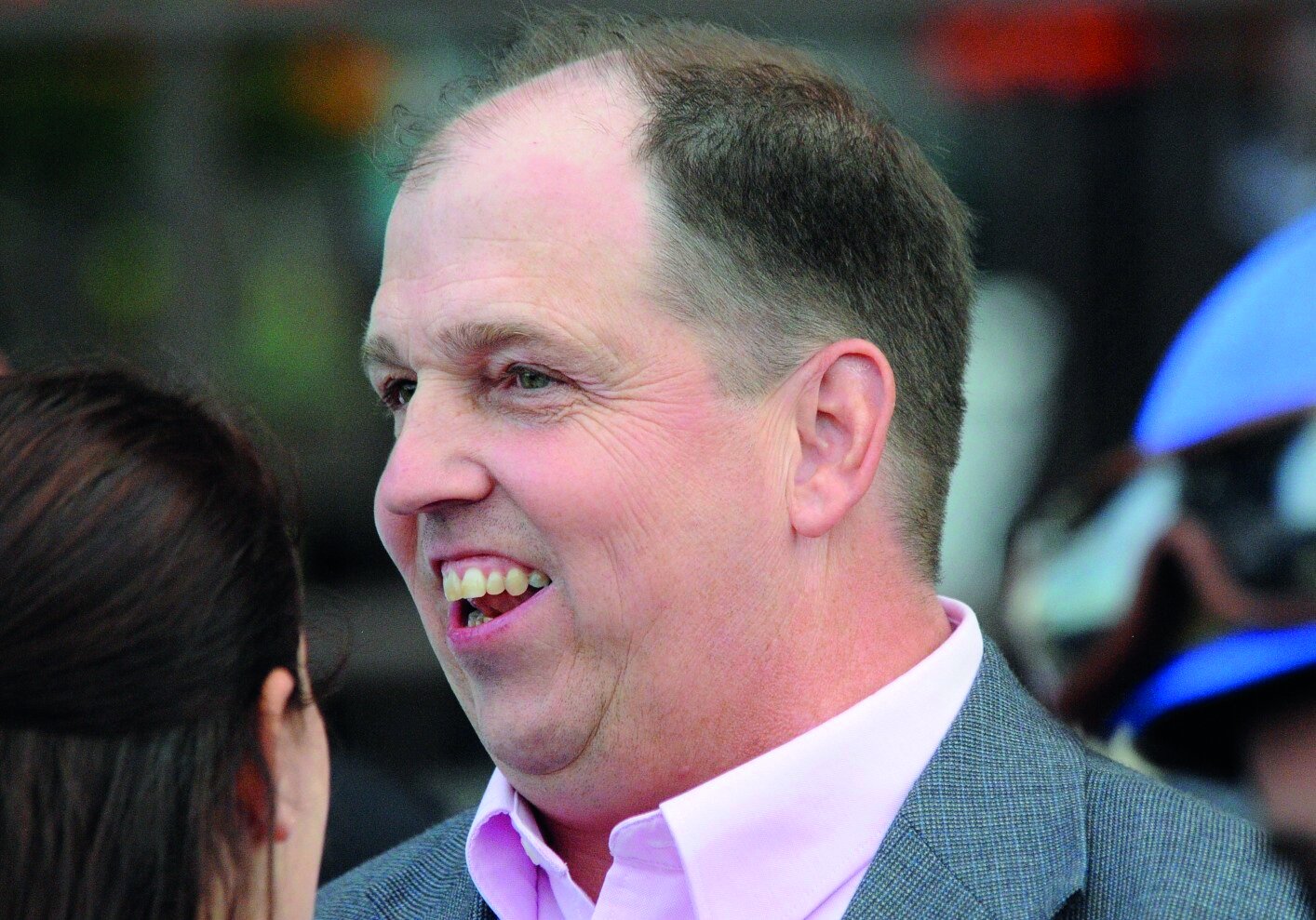#Soundbites - What's the hardest aspect of training?
Christophe Clement
You’ve got to be kidding. The list would be too long and you will not have enough room to cover it in one page. You’ve got to find the talent; you’ve got to find the help; you have to keep your owners happy; you have to find the right races. The list is endless. It’s not getting any easier. That's all I can tell you. In 2024, compared to twenty years ago, it’s not a one-man job anymore. It’s a team job now. It cannot be one individual. It’s got to be a team, I’m very lucky. I’ve got a great team.
******************************************
David Donk
Overall, probably the administration work. Managing the regulatory and administration of the business. With horses, I don’t think there is one. Just be patient and do the right thing every day.
*************************************
Joe Sharp
The most difficult aspect of training would probably be the human resources, managing people’s expectations and things like that. I would say that the animals are the easy part of the business.
*************************************
Tony Dutrow
I think the most difficult aspect of training for almost all trainers is the quality of the horse, trying to get their hands on a good horse. Now, once I have that good horse, I don’t think there’s anything difficult about training a good horse. A good trainer, and there are a lot of them, knows how to train. I can only hope that I’m on the same page as my client. That’s where I want to be. The client and the trainer can’t be feuding and fighting about where he is going to run and the details of all that. The horse will feel that.
***************************************
Mark Glatt
The most difficult thing about training is keeping horses racing sound. They’re athletes, of course, and they get injured. We have to put them in the best situation we can. Keeping them from getting injured is a difficult task.
**************************************
John Kimmel
That’s an interesting question. I think the most difficult thing is to run it as a business model that actually doesn’t cost you money. It’s a poor business model to begin with. For all the time and effort, if you just look at what it takes to train horses, the increasing labor costs, the increase of feed price, it makes it very difficult to train a horse and break even. It’s basically a negative cash flow pattern. That to me is the most difficult part of the business. I think the biggest problem that we face as trainers is trying to be somewhat cost effective. I think that’s why a lot of people are dropping out. It’s very tough to run things the proper way.
************************************
Craig Dollase
The horses don’t talk back. They can’t speak for themselves. You have to be a good horseman, always do the right thing by the animal. Dealing with the animals who don’t speak back to you is the tough part of training. You’ve got to be inquisitive about things and always put the horse first. It can be a difficult task at times. You have to be in tune with the horses.
**************************************
Eoin Harty
Where do I begin? I would say the most difficult aspect of training is obtaining new owners and keeping the owners you have happy. It’s a very competitive industry, and there’ll always be somebody that seems a little bit more attractive than you do. So you have to constantly deal with that, you can never rest; you can never turn your phone off. You need to appease a disgruntled client or attract a new one.
***********************************
Scott Lake
(Laugh). Honestly, it’s probably dealing with all the different personalities in the industry. Each owner handles good news and bad news differently. Your help might not like the way you say something. One guy’s fine with you yelling at him; the other guy’s not. In every aspect of the business, there are different personalities.
#Soundbites - What would you do if you weren’t training Thoroughbreds?
By Bill Heller
Mike Trombetta
Mike Trombetta
That’s a heck of a good question. I’ve been doing this so long, I couldn’t tell you. I really don’t know. Construction and demolition, that would be an option. I did that for 15-20 years, but I was doing this at the same time, too. I like this a heck of a lot more.
John Kimmel
John Kimmel
There are two things besides horses I love: snow skiing and deep sea fishing. I’m in Utah, skiing right now. I’m not that far from retirement. I’ve been doing this for 40 plus years. When things tail off, if my business slows down, that’s what I would be doing.
Mark Casse
Mark Casse
I’ve thought about that many times. Probably real estate. I just think it’s a challenge, and the rewards are great. That’s what I would probably do.
Jeremiah Englehart
Jeremiah Englehart
Oh, wow! I’m not sure. I’ve been doing horses since I was so young; I always wanted to be a trainer. I guess I would like to do something with football. I’ve always had a passion for football, maybe coaching or working with kids. I’ve always been a fan in sports. I played sports in high school. That’s something I would like to do.
Craig Dollase
Craig Dollase
I’ve always wanted to pursue sports. I’m a big sports advocate. I’d go for something in the sports world, not physical—something to help people in the sports world. I have a cousin who was actually the trainer for the San Francisco 49ers. I had an in. I could have gone in that direction. But I went to work for my dad, and now I’m a trainer. It turned out pretty good.
Tony Dutrow
Tony Dutrow
You know, at 64, I’m so much still in love with horses and horse racing. There will never be anything else for me. But if I would have never done horse racing, I’d try my hand at real estate. Because that’s a challenge.
David Donk
David Donk
A good question. Later in life, what interests me is management—racing management. But I’m lucky to be doing something now I love.
#Soundbites - trainers - horses had the fewest number or average starts per year - smallest field size
By Bill Heller
The new Jockey Club Fact Book showed 2019’s average field size dropped again to 7.24, and 2019’s starts per runner dropped again to 5.96. Both numbers are the lowest since at least 1950. Does that concern you?
Todd Pletcher
It does concern me. There’s a concern that today’s horses aren’t as durable as they were in the past. We need increased field size to increase handle. That’s a worry. But we also want to try to lessen breakdowns, and trainers are spacing races out more to make sure their horses are ready to run an optimal performance. We found over the years that horses, especially after hard races, need more time. It’s a complicated issue. It’s a constant learning curve. Each horse is different. Certainly we see that when we approach Triple Crown races for three-year-olds.
Neil Drysdale
Neil Drysdale
It does, obviously. It keeps contracting. We know that from the foal crops. It leads to us to say we should have less racing to get better field size. I think it will happen. When I started, we didn’t have year-round racing. Racing has been proliferating, but the boutique meets have done so well: Keeneland, Del Mar, Saratoga, Hot Springs.
Tom Albertrani
Tom Albertrani
It’s interesting to hear statistics about it. Am I concerned? I don’t think so. I think we’re still a pretty strong industry. I know there’s been a lot of smaller fields the last couple of years.
Ron Moquett
Ron Moquett
Not where I’m at. I go to the track at Remington Park, Oaklawn Park and Keeneland. They offer some of the largest field sizes there are. If you look it up, I think Remington is No.1, and Oaklawn is No. 2. That’s where I race most of my horses. I like bigger fields for handicappers to bet on. It’s easier to win races when they’re less, but I like people to see big fields with good horses.
Tony Dutrow
Yes. No. 1, I’m not surprised. It’s been alarming me for a number of years. Horses are not as sound. The reasons for the drop in starts, in my opinion, is that racing’s become enormously commercial. When I was so much younger, more breeders bred horses to race them much more than they do today. The people that have the funds fuel this game. The people who fuel the game need good broodmares. Then they breed them to a successful stallion. They spend a lot of money. And then they’re going to sell that horse at a sale. They’re not going to keep that horse running in the field with his buddies. That has a lot to do with why horses have less starts.
John Shirreffs
John Shirreffs
It does not really concern me. When I first was working on the racetrack as a hotwalker/ponyboy, Laffit Pincay was just beginning to ride. The rumor was that if you use him, you wouldn’t be able to run your horse again for 30 days because he got everything out of the horse. Now all the jockeys are like Laffit. Jockeys are now fitter, stronger and ride harder from gate to wire. I think the horses are asked to do more, so recovery takes a little longer. Horses are also carrying a lot more weight than they ever did. There used to be weight allowances. Look at the scale of weights. Much higher.
Wayne Catalano
Of course it concerns me. We’re running out of horses. We’re not breeding as many horses as we used to. I don’t know the numbers, but it’s finally catching up with us. Field size is handle, right? We get paid by the handle.



















